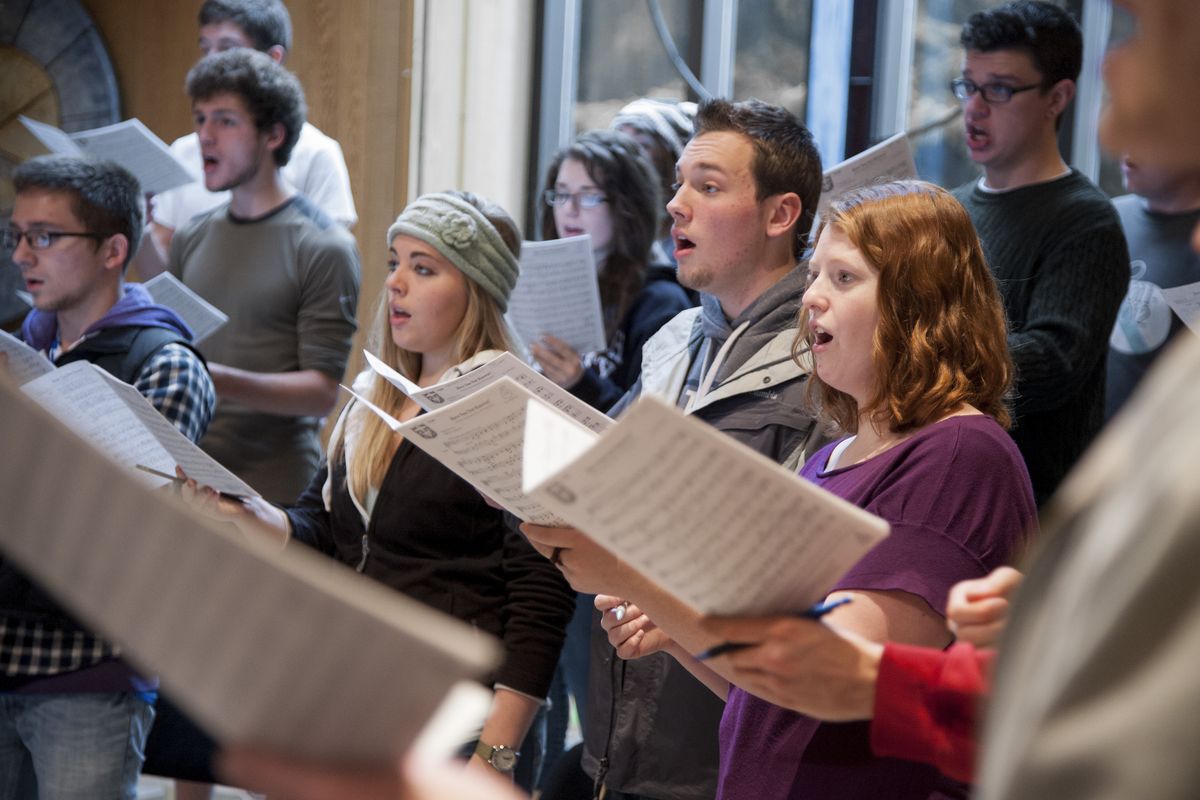Soul of the season
Whitworth’s choir turns back the clock with its annual Christmas Festival Concert

Four-part harmony. Remember it?
A generation or two ago, before “American Idol,” before synthesized ringtones, before home stereo systems with their woofers and tweeters and iPod docks, music was not a spectator sport.
Especially at this time of year, families sang around pianos, carolers really did walk from door to door, and in churches, people opened hymnbooks, read notes from the score, and sang them. But that was amateur hour.
To hear the precision of a really fine choir – dozens of trained voices breathing as one, weaving complex tapestries of sound, rising from a whisper to a rafter-rattling roar, then dropping back to candelit silence – is to discover the soul of the season.
This weekend in Spokane, Whitworth University’s choirs perform their annual Christmas concert. The music will range from the ethereal refrains of Giovanni Pierluigi da Palestrina and Ottorino Respighi, to a stomping, soul-and-gospel version of Georg Frideric Handel’s “Hallelujah” chorus. Plus some classic carols in which the audience will join. And at this event, the audience can sing. Long a highlight in the calendar of Whitworth’s fine vocal music program, this concert attracts swarms of musicians – including alumni, who return to make their memories new.
Early last week on the Whitworth campus, the current crop of students gathered to rehearse. Outside, rain poured from woolly skies and water dripped from the pines. Chattering young people shook off their coats and climbed onto stools, clad in an incongruous array of flip-flops, shorts, T-shirts, jeans, red sneakers and stocking caps.
Then, a silent pause. Everyone inhaled. And music shook the room: “Have you not known, have you not heard …”
Choral music is more than a tune, said Whitworth choir director Marc Hafso, it is “the academic canon … literature … faith.”
If this were NCAA basketball, these kids might be candidates for the Sweet 16. Trained like a 7-footer’s heavily-muscled arms, their voices send the vocal equivalent of 3-point shots arcing for the net.
In the U.S., choirs make few headlines. In Argentina, where Whitworth’s choir has toured, “We were told choral music is second only to soccer,” Hafso said. In the United States, “We are not typically a singing culture.”
Hafso’s choir does include music majors, training for performance and teaching careers. Most – like NCAA athletes – will get jobs in other fields: health sciences, education, technology …
So what’s the point? “When words fail us,” Hafso says, “we tend to sing. Lullabies. National anthems. There is something deeply organic and hopeful about singing. The thing that gives me hope: Choral music is such an interdisciplinary art. It has story, history, language, literature, psychology, sociology. These people come together, work well with one another … in an ensemble, life happens.”
“When I think about past cultures, I’m not interested in how they balanced all their budgets. I’m interested in their arts, their culture, and how they treated their people,” Hafso said.
As his students rehearse, Hafso interrupts with corrections, jokes, encouragements, coaching. “Don’t hurt yourself. Use good vocal technique. This is not about brute force, this is about joy.”
The sopranos kick it into overdrive. High descant notes shiver the air. Male voices lay down a low growl. The choir’s volume swells with a power of harmony and heart no iPod could reproduce.
Most of the rehearsal focuses on “Laud to the Nativity,” a rarely heard piece Respighi composed in 1930. Rights to the score were costly; an anonymous donor made the performance possible.
As with all of Whitworth’s Christmas concerts, this one will offer a diversity of styles and expressions. A slideshow will inject the visual arts. Narration from Isaiah’s 40th chapter will add poetic refrains of an ancient hope. Hafso has been working on the concert, organizing the four ensembles, the instrumentalists, the soloists and the overall artistic precision, since summer.
At the center, though, is the original instrument. No keys to press. No valves to work or sticks to swing. The human voice, in four-part harmony. As vocalists, Hafso says, “Our work is a little more mysterious. Even magical, I guess.”